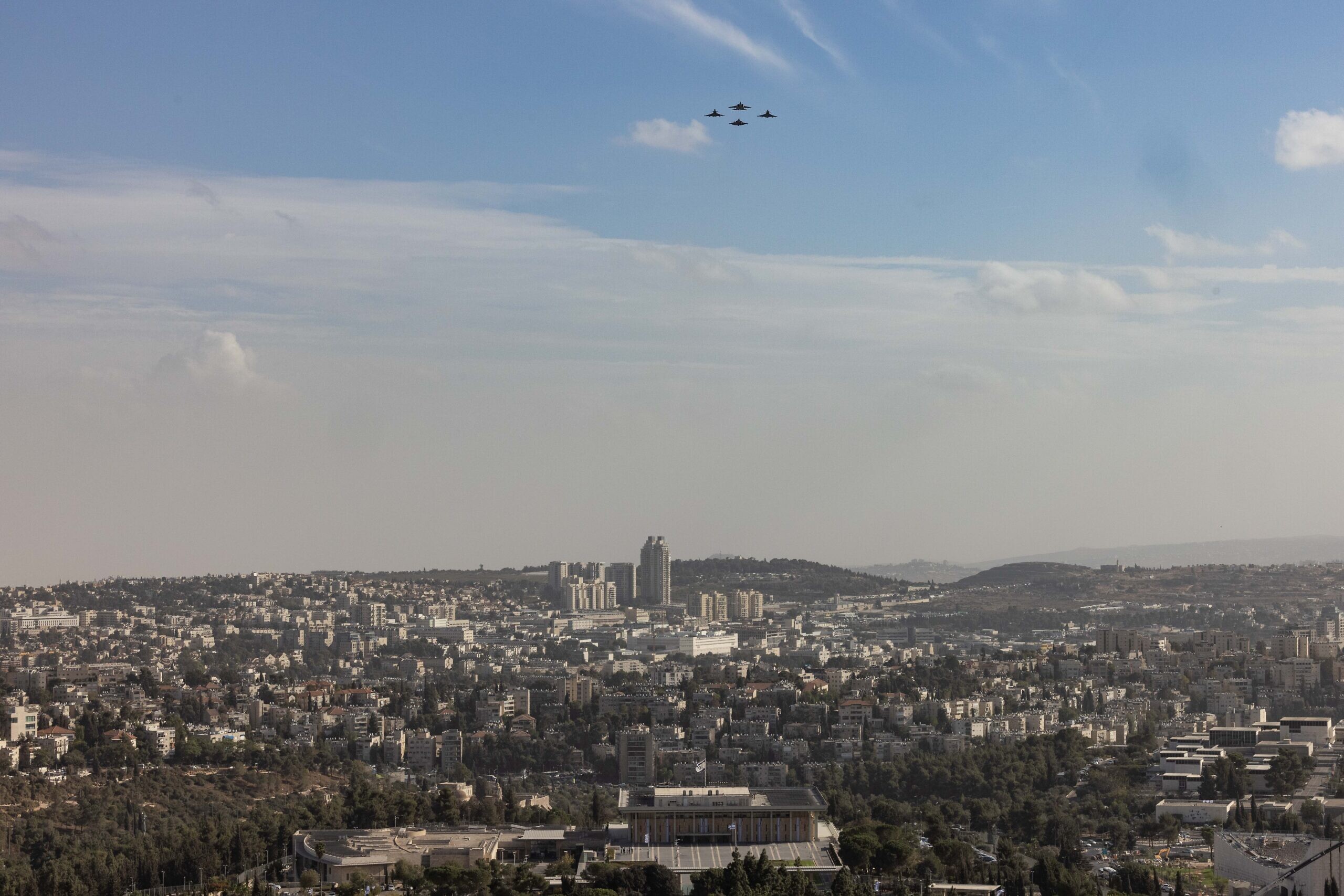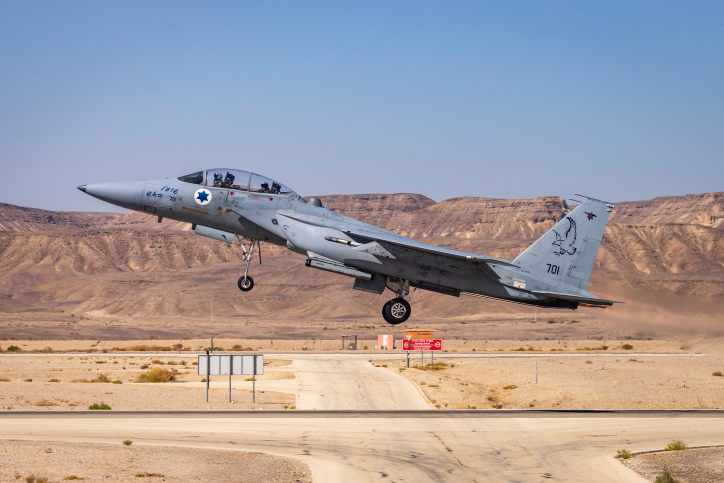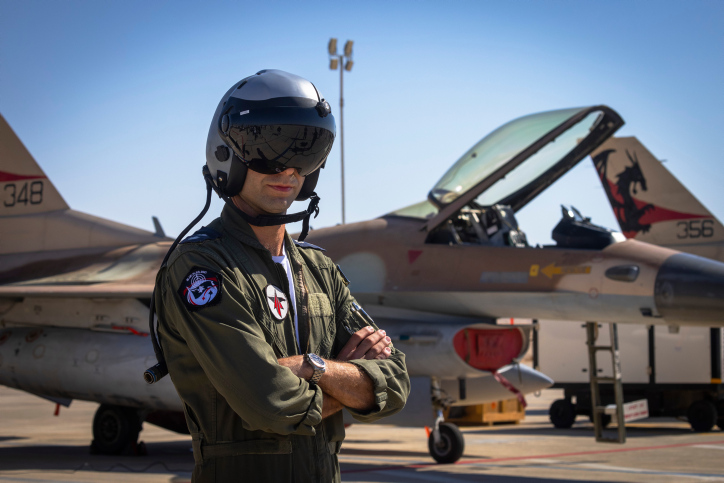The Commander of the United Arab Emirate Air Force, Maj. Gen. Staff Pilot Ibrahim Nasser Mohammed Al Alawi, paid a historic visit to Israel to observe the Israeli Air Force’s Blue Flag international air exercise on Monday.
The fifth in its series, this year’s Blue Flag drill is the largest and most advanced exercise hosted by the IAF yet, and is taking place across southern and central Israel.
The event represents the first time that Britain’s Royal Air Force deployed a squadron (of Eurofighter jets) to Israel since the establishment of the state, as well as the first time that India sent a squadron; it brought Mirage jets. It’s also the first time that a French squadron deployed to Israel with Rafael aircraft.
Both Israeli and Italian F-35 jets took part in the exercise, making them the only ones with fifth-generation aircraft in the drill. Blue Flag included offensive and defensive training scenarios.
Brig. Gen. Amir Lazar, the head of the IAF’s training and doctrine division, said on Sunday, “This is the most significant international exercise and deployment to Israel to date.”

‘Training for a wide range of emergency scenarios’
The fifth in the Blue Flag series, the goal of the exercise was to simulate challenging combat scenarios and joint coalition flights in the most realistic manner, though it also had a wider impact on strategic international relations. The IAF views the exercise as a bride for regional cooperation, stability and advancing shared capabilities.
Preparations have been occurring for 10 months, initially through online communications between the participating countries and later via representatives arriving in Israel to build training scenarios.
In a statement, IAF Commander Maj. Gen. Amikam Norkin also addressed some of the real-world challenges that Israel faces and that helped shape the exercise.
“The Middle East is a complex arena, which changes at any given moment,” he said. “The threat to the State of Israel comes from different arenas—the Gaza Strip, Syria, Lebanon, Iran and more. The challenges we face are increasing, and we make sure to be one step ahead of the enemy. The IAF is constantly training to be ready for a wide range of emergency scenarios.”

Addressing the exercise, Norkin added that “we fly in a joint coalition in limited airspace, wing to wing with the partnering air forces. The joint training allows us to learn from the various air forces participating in the exercise and prepares the IAF personnel for real-time scenarios in order to succeed in our mission—maintaining the security of the State of Israel.”
The drills occurred mostly in the Negev Desert in Israel’s south, which makes up 60 percent of the country though contains just 10 percent of the population.
During the drill, the IAF introduced its version of air superiority to the scenario, defining the mission as defending one’s own home—not a mission that most European air forces are accustomed to.
“Aircraft infiltrating our air space need immediate interception, or they will bomb the home city,” said an IAF source. “This is a different mentality when one defines the mission as having a few seconds to defend your home from an aircraft on the way. The risks one takes are different in that scenario.”
The exercise also included a simulated war over several days, involving missions into “red land” (enemy territory). Should teams lose assets, such as ammunition depots or ground controllers, it will affect their performance in the following day of the simulation. The goal was to defeat the enemy within three days against a dynamic, thinking and mobile adversary.

‘An increase for the entire fleet’
Capt. Scott Wawrzyniak, a U.S. Air Force F-16 pilot based in Germany, said: “This has been great training with lots of countries taking part. We are here offering our tactical solutions and learning.”
He noted the speed, precision and types of weapons simulated in the exercise.
An F-16 can benefit significantly from having an F-35 on its side by receiving “data passage” on threats from the newer aircraft and their more sophisticated ability to gather information from sensors. “It’s an increase for the entire fleet,” he said.
Indian fighter-jet pilots told JNS that the exercise provided them with “good training value,” adding that the combination of fourth- and fifth-generation fighters is something they have yet experienced back home.

Capt. A, an IAF F-35 pilot, said the Israelis adopt techniques that it sees and likes from other air forces. He described his fifth-generation aircraft as a “breakthrough step forward,” adding that the entire air force is marching ahead due to its arrival.
Speaking to Italian colleagues who fly the same aircraft revealed “many similar experiences,” he told JNS. “We are learning tactical lessons, which are broad,” he added.
In 2022, the IAF is scheduled to hold an internal Israeli exercise with multiple Israeli squadrons, as well as take part in international exercises overseas.


























